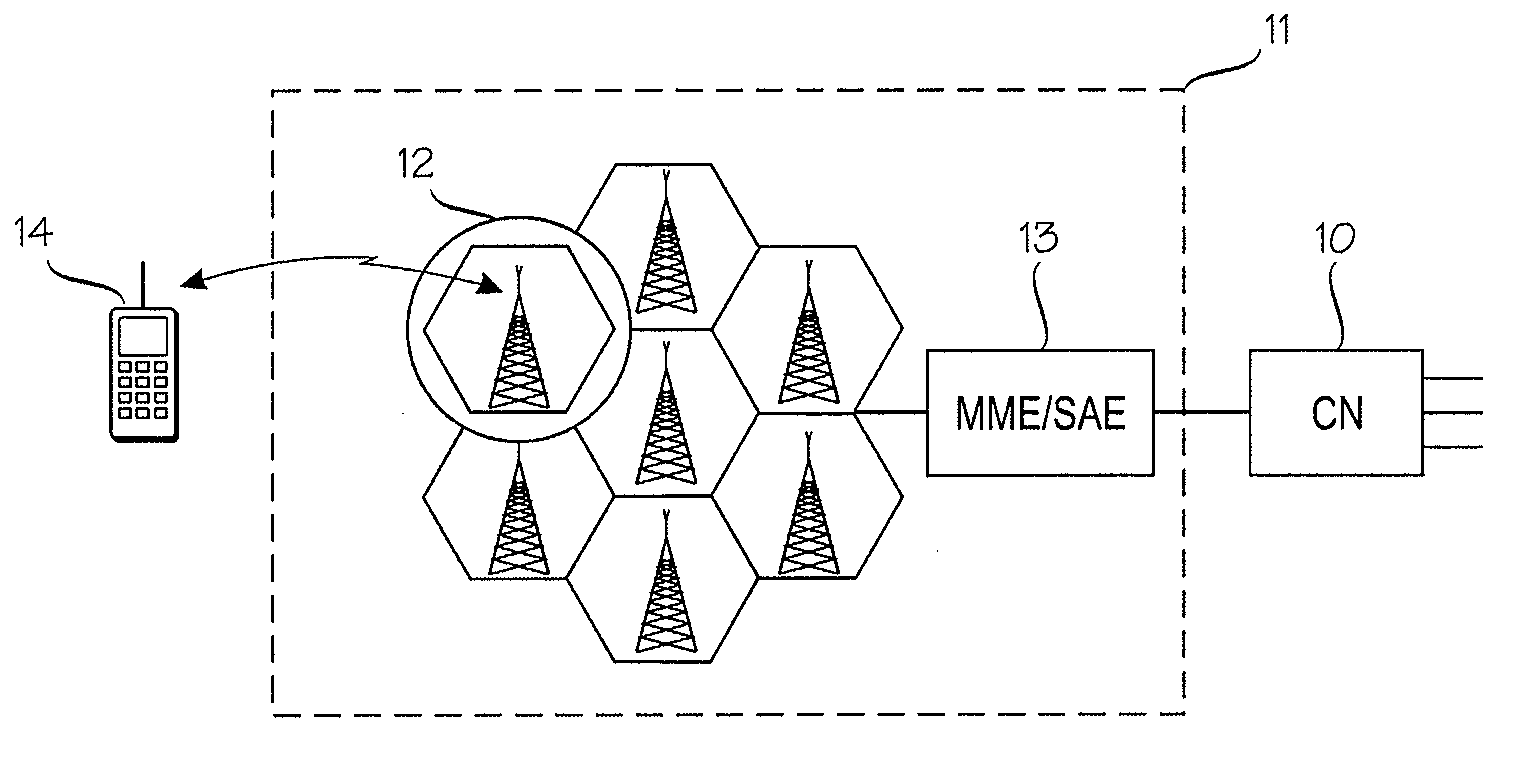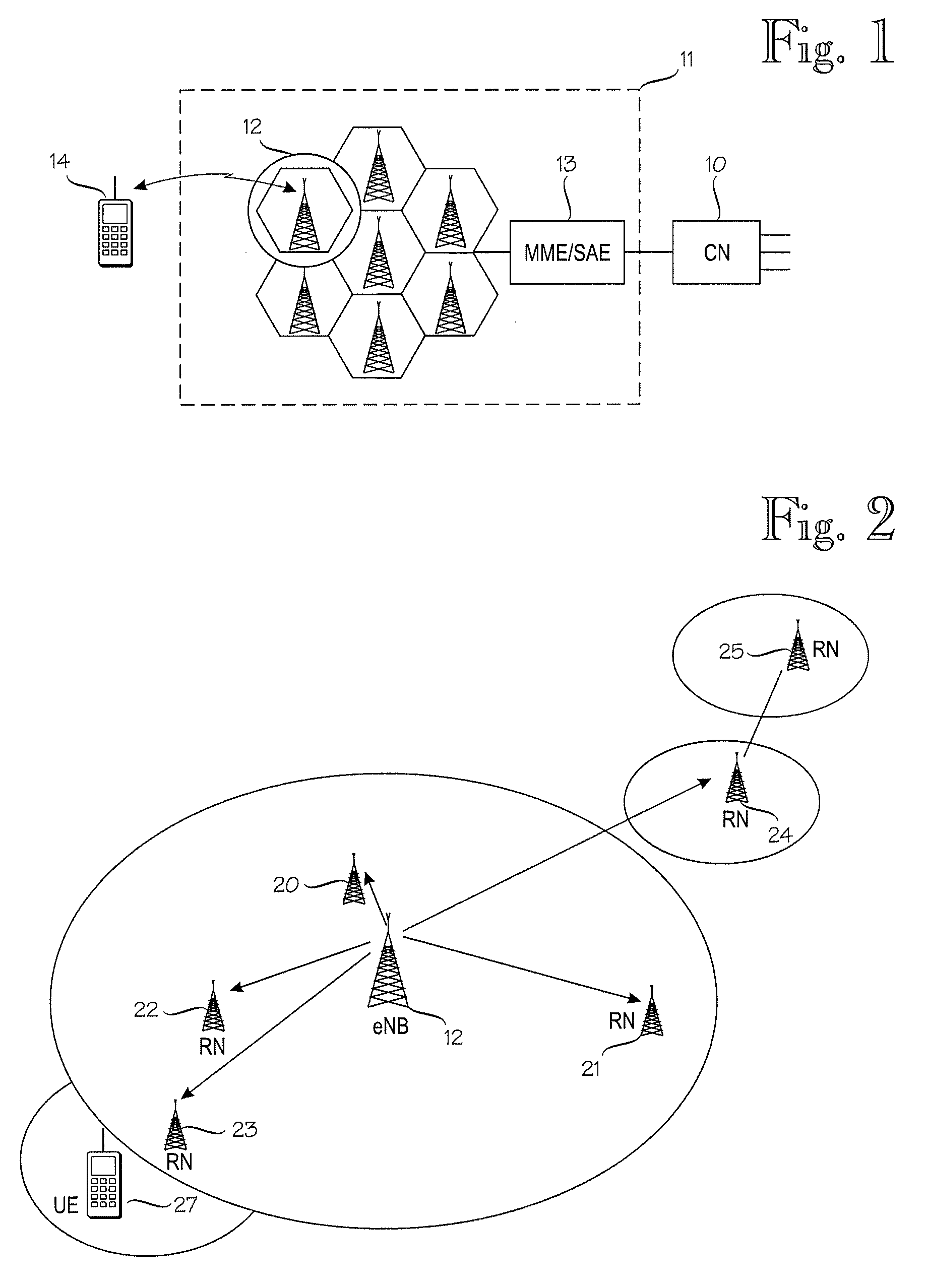Allocation of user equipment identifier
a technology of user equipment and identification number, applied in the field of identification of user equipment, can solve the problems of significant delays, intensive interaction of interface operations, and device compatibility, and achieve the effect of easy and effective introduction of relay nodes
- Summary
- Abstract
- Description
- Claims
- Application Information
AI Technical Summary
Benefits of technology
Problems solved by technology
Method used
Image
Examples
Embodiment Construction
[0018]The following embodiments are exemplary implementations of the pre-sent invention. Although the specification may refer to “an”, “one”, or “some” embodiment(s), reference is not necessarily made to and / or a described feature does not apply to only one particular embodiment only. Single features of different embodiments of this specification may be combined to provide further embodiments that are thus considered to belong to the scope of protection.
[0019]The invention may be applied to any communications system where user equipment may be individually addressed by means of an identifier allocatable by an access point. In the following, the invention is described with a cellular system whose working range is covered with cells of several base stations, and the access point corresponds to a base station. FIG. 1 illustrates a simplified structure of such a cellular system. More specifically, the cellular system of FIG. 1 represents a mobile communications system where mobile user ...
PUM
 Login to View More
Login to View More Abstract
Description
Claims
Application Information
 Login to View More
Login to View More - R&D
- Intellectual Property
- Life Sciences
- Materials
- Tech Scout
- Unparalleled Data Quality
- Higher Quality Content
- 60% Fewer Hallucinations
Browse by: Latest US Patents, China's latest patents, Technical Efficacy Thesaurus, Application Domain, Technology Topic, Popular Technical Reports.
© 2025 PatSnap. All rights reserved.Legal|Privacy policy|Modern Slavery Act Transparency Statement|Sitemap|About US| Contact US: help@patsnap.com



